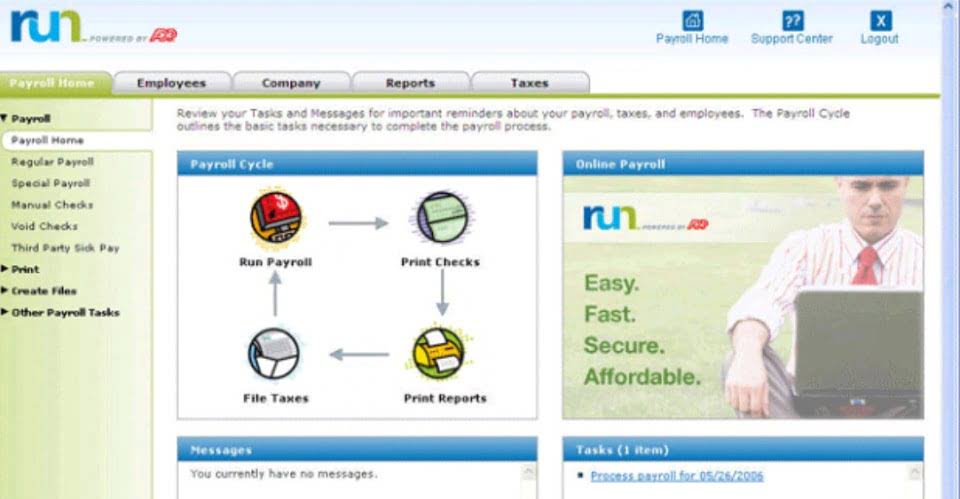Content
- Visualizing The Future Value Amount (FV)
- Recommended explanations on Business-studies Textbooks
- Calculating Present Value Using the Tables
- How is the present value of a single sum related to the present value of an annuity?
- Present Value Calculator
- What Is Present Value in Finance, and How Is It Calculated?

So, for example, if a two-year Treasury paid 2% interest or yield, the investment would need to at least earn more than 2% to justify the risk. If you received $100 today and deposited it into a savings account, it would grow over time to be worth more than $100. This fact of financial life is a result of the time value of money, a concept which says it’s more valuable to receive $100 now rather https://www.bookstime.com/ than a year from now. To put it another way, the present value of receiving $100 one year from now is less than $100. These elements are present value and future value, as well as the interest rate, the number of payment periods, and the payment principal sum. The discount factor 1 / ( 1 + i ) t may be calculated for a range of time periods and interest rates and tabulated for quick reference.
- It is impossible to compare the value or potential purchasing power of the future dollar to today’s dollar; they exist in different times and have different values.
- Suppose you inherit $50,000, and you want to know if investing that lump sum will cover your child’s tuition and education costs – you’ve come to the right place.
- Remove the negative symbol in front of it and you get 19,588 or $19,588, as we got with our other formulas.
- For example, suppose you want to know what interest rate (compounded semi-annually) you need to earn in order to accumulate $10,000 at the end of 3 years, with an investment of $7,049.60 today.
- Assume that you want to accumulate sufficient funds to buy a new car and that you will need $5,000 in three years.
- In other words, the discount rate would be the forgone rate of return if an investor chose to accept an amount in the future versus the same amount today.
If we assume that the home sold for $16,500 in 1948 and the price of the home in 2019 was about $500,000, that’s an annual appreciation rate of almost 5%. PV (along with FV, I/Y, N, and PMT) is an important element in the time value of money, which forms the backbone of finance. There can be no such things as mortgages, auto loans, or credit cards without PV. As shown in the screenshot below, the annuity type does make the difference.
Visualizing The Future Value Amount (FV)
There are benefits to investing money now in hopes of a larger return in the future. These future earnings are possible because of interest payments received as an incentive for tying up money long-term. Knowing what these future earnings will be can help a business decide if the current investment is worth the long-term potential. Recall, the future value (FV) as the value of an investment after a certain period of time. Future value considers the initial amount invested, the time period of earnings, and the earnings interest rate in the calculation.
As discussed previously, annuities are a series of equal payments made over time, and ordinary annuities pay the equal installment at the end of each payment period within the series. This can help a business understand how their periodic returns translate into today’s value. Present Value, or PV, is defined as the value in the present of a sum of money, in contrast to a different value it will have in the future due to it being invested and compound at a certain rate. These examples assume ordinary annuity when all the payments are made at the end of a period. For example, it can help you determine which is more profitable – to take a lump sum right now or receive an annuity over a number of years.
Recommended explanations on Business-studies Textbooks
The same financial calculation applies to 0% financing when buying a car. Future value (FV) is the value of a current asset at a specified date in the future based on an assumed rate of growth. The FV equation assumes a constant rate of growth and a single upfront payment left untouched for the duration of the investment. The FV calculation allows investors to predict, with varying degrees of accuracy, the amount of profit that can be generated by different investments. This is equivalent to saying that at a 12% interest rate compounded annually, it does not matter whether you receive $8,511.40 today or $15,000 at the end of 5 years.

So, to find the present value we take the future value and divide it by (1 + i)N where N is the period where the future value is located. Note that since we are dividing the future value, the present value will always be less than the future value. Use the future value tables provided in Appendix B when needed, and round answers to the nearest cent where required. Knowing how to write a PV formula for a specific case, it’s quite easy to tweak it to handle all possible cases. If some argument is not used in a particular calculation, the user will leave that cell blank.
Calculating Present Value Using the Tables
To get your answer, you need to calculate the present value of the amount you will receive in the future ($11,000). For this, you need to know the interest rate that would apply if you invested that money today, let’s assume https://www.bookstime.com/articles/present-value-of-a-single-amount it’s 7%. An annuity consists of various payments or receipts and the present value of each of these payments or receipts are computed and then accumulated or added up in order to derive the present value of the annuity.
What is the PV of a single amount table?
What is a Present Value of 1 Table? A present value of 1 table states the present value discount rates that are used for various combinations of interest rates and time periods. A discount rate selected from this table is then multiplied by a cash sum to be received at a future date, to arrive at its present value.
Similar inflation characteristics can be demonstrated with housing prices. After World War II, a typical small home often sold for between $16,000 and $30,000. Many of these same homes today are selling for hundreds of thousands of dollars. Much of the increase is due to the location of the property, but a significant part is also attributed to inflation. The annual inflation rate for the Mustang between 1964 and 2019 was approximately 4.5%.
How is the present value of a single sum related to the present value of an annuity?
If offered a choice to receive a certain sum of money right now or defer the payment into the future, which would you choose? In the financial world, this is explained by the time value of money concept. A comparison of present value with future value (FV) best illustrates the principle of the time value of money and the need for charging or paying additional risk-based interest rates. Simply put, the money today is worth more than the same money tomorrow because of the passage of time. Future value can relate to the future cash inflows from investing today’s money, or the future payment required to repay money borrowed today.
- We are applying the concept to how much money we need to buy a business.
- You have some money now, but you don’t know how much, if any, you will be able to save before you buy your business in five years.
- This present value calculator can be used to calculate the present value of a certain amount of money in the future or periodical annuity payments.
- If we are using lower discount rate(i ), then it allows the present values in the discount future to have higher values.
- When considering a single-period investment, n is one, so the PV is simply FV divided by 1+i.
- Presumably, inflation will cause the price of goods to rise in the future, which would lower the purchasing power of your money.
On the other hand, delaying payment from an investment may be beneficial if there is an opportunity to earn interest. The longer payment is delayed, the more available earning potential there is. This can be enticing to businesses and may persuade them to take on the risk of deferment. Also, please note that the returned present value is negative, since it represents a presumed investment, which is an outflow.
The discount rate that is chosen for the present value calculation is highly subjective because it’s the expected rate of return you’d receive if you had invested today’s dollars for a period of time. PV calculations can also tell you such things as how much money to invest right now in return for specific cash amounts to be received in the future, or how to estimate the rate of return on your investments. Our focus will be on single amounts that are received or paid in the future. We’ll discuss PV calculations that solve for the present value, the implicit interest rate, and/or the length of time between the present and future amounts. As mentioned, to determine the present value or future value of cash flows, a financial calculator, a program such as Excel, knowledge of the appropriate formulas, or a set of tables must be used. The company would be receiving a stream of four cash flows that are all lump sums.
